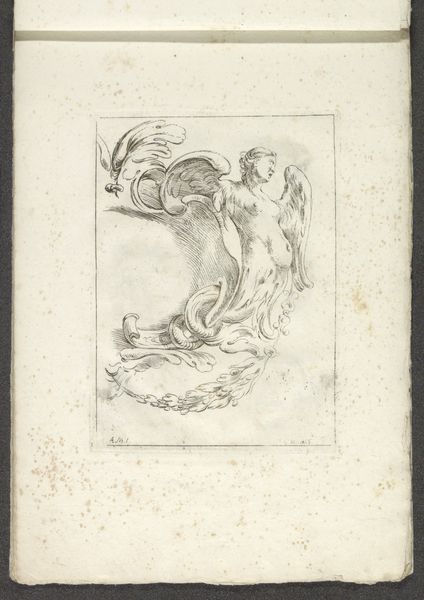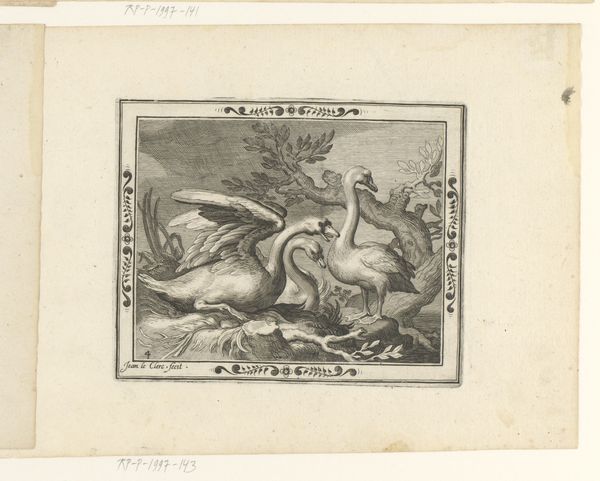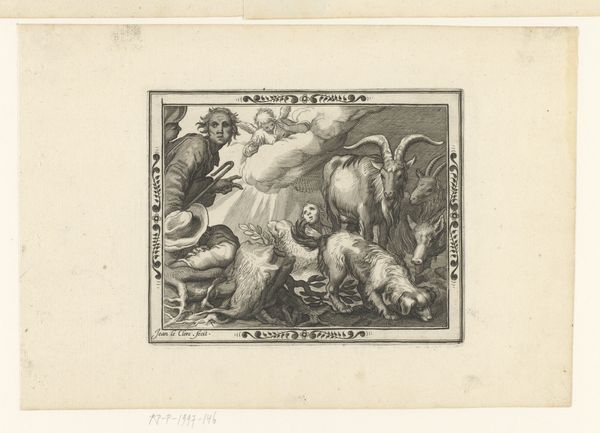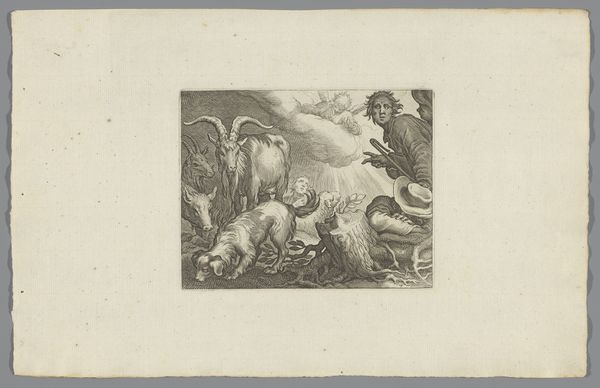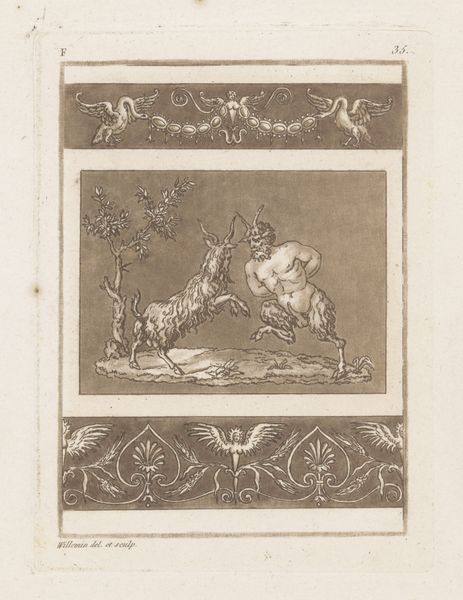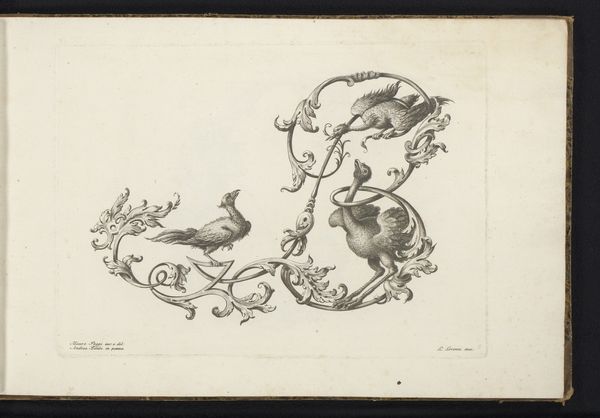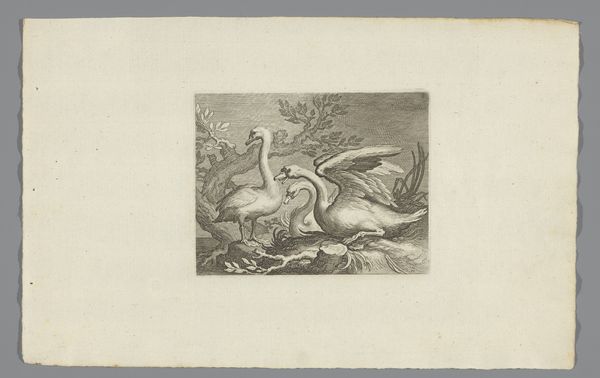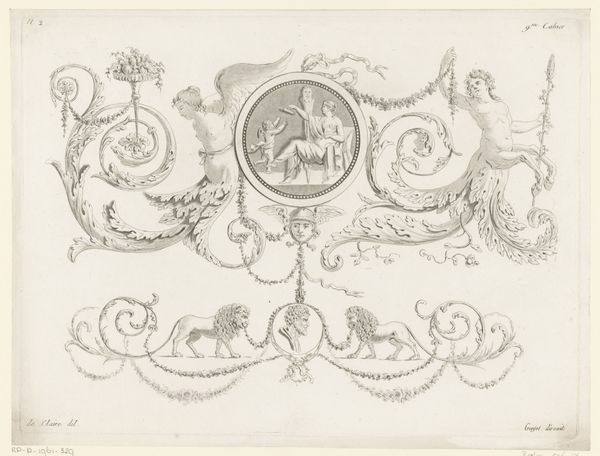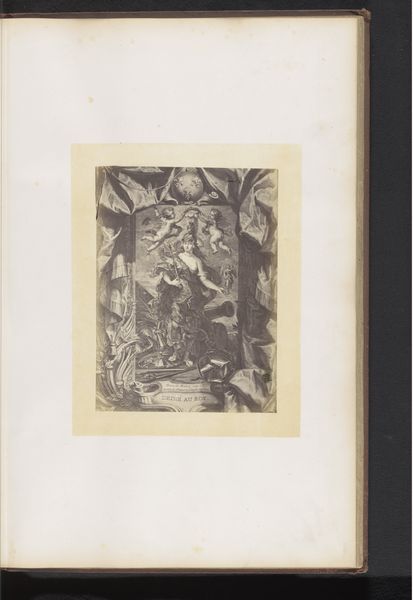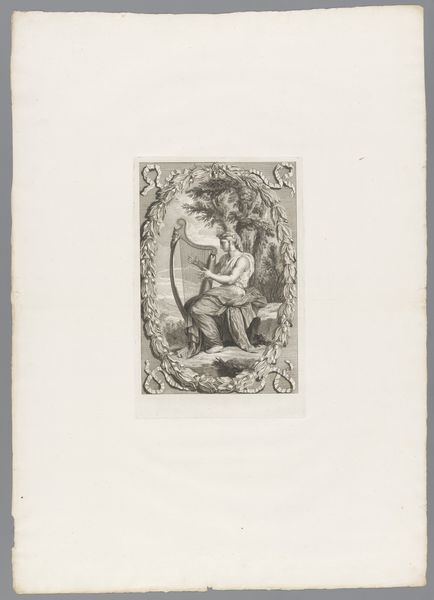
drawing, pencil
#
drawing
#
ink drawing
#
pen drawing
#
landscape
#
figuration
#
romanticism
#
pencil
#
pen work
#
academic-art
Dimensions: height 141 mm, width 206 mm
Copyright: Rijks Museum: Open Domain
Curator: This drawing, crafted around 1830 by Karl Palzow, is entitled “Gevecht tussen draak en vrouw,” which translates to “Fight between dragon and woman.” The piece seems to be executed primarily in pencil and ink. Editor: My first impression? It's fascinating, almost dreamlike. The delicate lines lend a surreal quality to the epic struggle being portrayed. The figures, set against a minimalist backdrop, almost appear to be floating. Curator: Palzow's work reflects a deep engagement with the Romantic ideals of the time. You see the preoccupation with emotion, the sublime power of nature embodied in that craggy, almost primordial landscape, and of course, the central theme of conflict. Editor: Exactly, and this image, reduced to essentially black and white, amplifies the psychological dimensions. What’s fascinating to me is the recurring symbolism of the dragon, frequently representing chaos or primal power, juxtaposed here with what appears to be a crowned, classical figure. What narratives did such dragon-slaying imagery reinforce in early 19th-century Europe? Curator: The cultural symbolism of the dragon is layered and historically contingent. The woman as the embodiment of virtue conquering destructive, untamed forces is a theme seen for centuries across Europe, a theme with direct references in early Christian imagery and mythology that was still relevant and meaningful to a 19th-century audience. Consider the power of those pre-industrial narratives as modernity encroached! Editor: It brings to mind anxieties about societal order, and the precariousness of "civilized" life against internal drives and forces. Even the seemingly barren landscape feels pregnant with unspoken narrative weight. The minimal use of hatching, too, makes one wonder about Palzow's intentions – were they deliberately leaving space for the viewer to project meaning? Curator: It’s quite plausible, given the time in which he worked. Palzow presents us not with a literal depiction, but a suggestive framework of universal anxieties and triumphs. Thank you for providing that thoughtful cultural perspective. Editor: And thank you for clarifying the piece within its socio-political timeframe. These nuanced portrayals can offer new insight to our understanding of society then, and now.
Comments
No comments
Be the first to comment and join the conversation on the ultimate creative platform.
